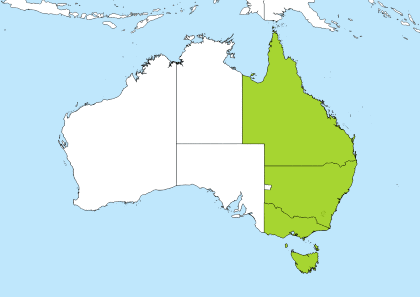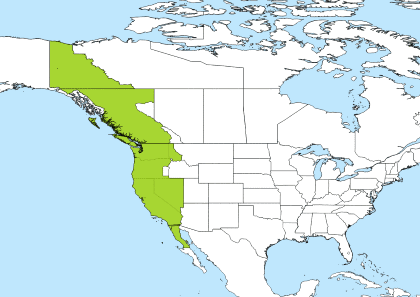AEST to PDT Converter
AEST is NOT in use by many locations
AEDT (Australian Eastern Daylight Time) is used instead. Switch to AEDT time zone or select one of the cities Sydney, Melbourne, Gold Coast) for automatic timezone change.Time Difference
Australian Eastern Standard Time is 18 hours ahead of Pacific Standard Time
11:30 pm23:30 in AEST is 5:30 am05:30 in PST
AEST to PDT call time
Best time for a conference call or a meeting is between 9:30pm-11:30pm in AEST which corresponds to 4:30am-6:30am in PDT
11:30 pm23:30 Australian Eastern Standard Time (AEST). Offset UTC +10:00 hours
5:30 am05:30 Pacific Standard Time (PST). Offset UTC -8:00 hours
11:30 pm23:30 AEST / 5:30 am05:30 PST
| AEST | PST |
|---|---|
| 12am (midnight) | 6am |
| 1am | 7am |
| 2am | 8am |
| 3am | 9am |
| 4am | 10am |
| 5am | 11am |
| 6am | 12pm (noon) |
| 7am | 1pm |
| 8am | 2pm |
| 9am | 3pm |
| 10am | 4pm |
| 11am | 5pm |
| 12pm (noon) | 6pm |
| 1pm | 7pm |
| 2pm | 8pm |
| 3pm | 9pm |
| 4pm | 10pm |
| 5pm | 11pm |
| 6pm | 12am (midnight) |
| 7pm | 1am |
| 8pm | 2am |
| 9pm | 3am |
| 10pm | 4am |
| 11pm | 5am |
| 0:00 | 6:00 |
| 1:00 | 7:00 |
| 2:00 | 8:00 |
| 3:00 | 9:00 |
| 4:00 | 10:00 |
| 5:00 | 11:00 |
| 6:00 | 12:00 |
| 7:00 | 13:00 |
| 8:00 | 14:00 |
| 9:00 | 15:00 |
| 10:00 | 16:00 |
| 11:00 | 17:00 |
| 12:00 | 18:00 |
| 13:00 | 19:00 |
| 14:00 | 20:00 |
| 15:00 | 21:00 |
| 16:00 | 22:00 |
| 17:00 | 23:00 |
| 18:00 | 0:00 |
| 19:00 | 1:00 |
| 20:00 | 2:00 |
| 21:00 | 3:00 |
| 22:00 | 4:00 |
| 23:00 | 5:00 |
Australian Eastern Standard Time
Offset: AEST is 10 hours ahead Greenwich Mean Time (GMT) and is used in Australia
Countries: It is used in following countries: Australia
Principal Cities: The largest city in the AEST timezone is Sydney from Australia with population about 4.627 million people. Other major cities in the area are Melbourne, Brisbane, Gold Coast, Canberra

Daylight Saving: This is a standard time zone, however during summer some places switch clocks for one hour forward when daylight saving comes into effect and observe Australian Eastern Daylight Time (AEDT).
 End: Australian Eastern Standard Time (AEST) has ended on Sunday, October 6, 2024 at 2:00 am local time and clocks were set one hour forward to Sunday, October 6, 2024, 3:00 am local daylight time instead. Standard time ends annually the on first Sunday of October.
End: Australian Eastern Standard Time (AEST) has ended on Sunday, October 6, 2024 at 2:00 am local time and clocks were set one hour forward to Sunday, October 6, 2024, 3:00 am local daylight time instead. Standard time ends annually the on first Sunday of October.
 Start: Australian Eastern Standard Time (AEST) starts on Sunday, April 6, 2025 at 3:00 am local time and clocks are set one hour back to Sunday, April 6, 2025, 2:00 am. Standard time starts annually the on first Sunday of April.
Start: Australian Eastern Standard Time (AEST) starts on Sunday, April 6, 2025 at 3:00 am local time and clocks are set one hour back to Sunday, April 6, 2025, 2:00 am. Standard time starts annually the on first Sunday of April.
Australian Eastern Standard Time (AEST) is used in Queensland, Victoria, Tasmania, New South Wales (except Broken Hill), Australian Capital Territory and in folling major cities Brisbane, Sydney, Melbourne, Hobart, Canberra
Only part of Australia observe daylight saving. It is used in New South Wales, Victoria, South Australia, Tasmania, and the Australian Capital Territory. Daylight saving is not observed in Queensland, Western Australia or the Northern Territory.
AEST representations, usage and related time zones
- +10 - basic short
- +1000 - basic
- +10:00 - extended
- +1000 - sign character (+) followed by a four digit time providing hours (10) and minutes (00) of the offset. Indicates ten hour and zero minutes time differences to the east of the zero meridian.
- Kilo - Military abbreviation for AEST
- K - short form of 'Kilo'
- Antarctica/Macquarie
- Australia/ACT
- Australia/Brisbane
- Australia/Canberra
- Australia/Currie
- Australia/Hobart
- Australia/Lindeman
- Australia/Melbourne
- Australia/NSW
- Australia/Queensland
- Australia/Sydney
- Australia/Tasmania
- Australia/Victoria
- AEST - Australian Eastern Standard Time
- CHUT - Chuuk Time
- ChST - Chamorro Standard Time
- K - Kilo Time Zone
- KDT - Korea Daylight Time
- PGT - Papua New Guinea Time
- VLAT - Vladivostok Time
- YAKST - Yakutsk Summer Time
- YAPT - Yap Time
Pacific Daylight Time
Offset: PDT is 7 hours behind Greenwich Mean Time (GMT) and is used in North America
Countries: It is used in following countries: Canada, Mexico, United States
Principal Cities: The largest city in the PDT timezone is Los Angeles from USA with population about 3.793 million people. Other major cities in the area are Vancouver, Tijuana, San Diego, San Jose
French: HAP - Heure Avancée du Pacifique
Spanish: PT - Zona Noroeste

Daylight Saving: Pacific Daylight Time (PDT) is a daylight saving/summer time zone, however during winter some places adjust time for one hour back and observe Pacific Standard Time (PST).
 End: Pacific Daylight Time (PDT) has ended on Sunday, November 3, 2024 at 2:00 am local time and clocks were set one hour back to Sunday, November 3, 2024, 1:00 am local standard time instead. Daylight saving ends annually the on first Sunday of November
End: Pacific Daylight Time (PDT) has ended on Sunday, November 3, 2024 at 2:00 am local time and clocks were set one hour back to Sunday, November 3, 2024, 1:00 am local standard time instead. Daylight saving ends annually the on first Sunday of November
 Start: Pacific Daylight Time (PDT) starts on Sunday, March 9, 2025 at 2:00 am local time and clocks are set one hour forward to Sunday, March 9, 2025, 3:00 am. Daylight saving starts annually the on second Sunday of March
Start: Pacific Daylight Time (PDT) starts on Sunday, March 9, 2025 at 2:00 am local time and clocks are set one hour forward to Sunday, March 9, 2025, 3:00 am. Daylight saving starts annually the on second Sunday of March
PDT representations, usage and related time zones
- -07 - basic short
- -0700 - basic
- -07:00 - extended
- -0700 - sign character (-) followed by a four digit time providing hours (07) and minutes (00) of the offset. Indicates seven hour and zero minutes time differences to the west of the zero meridian.
- Tango - Military abbreviation for PDT
- T - short form of 'Tango'
- America/Ensenada
- America/Los_Angeles
- America/Santa_Isabel
- America/Tijuana
- America/Vancouver
- Canada/Pacific
- Mexico/BajaNorte
- PST8PDT
- US/Pacific
- MST - Mountain Standard Time
- PDT - Pacific Daylight Time
- YST - Yukon Standard Time
- T - Tango Time Zone
